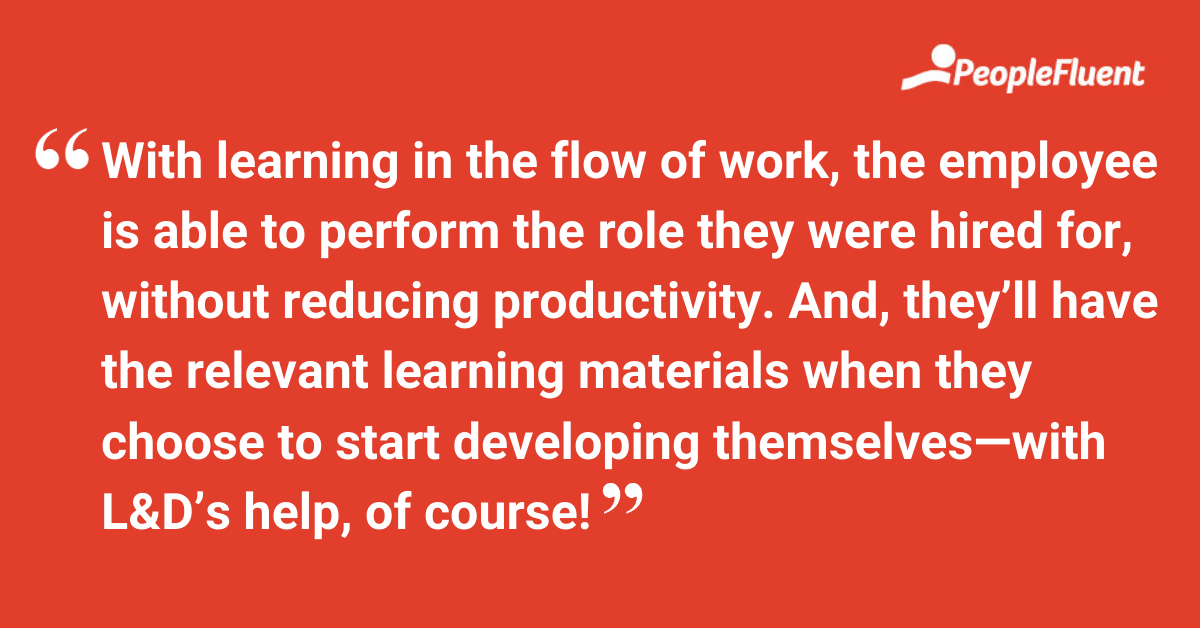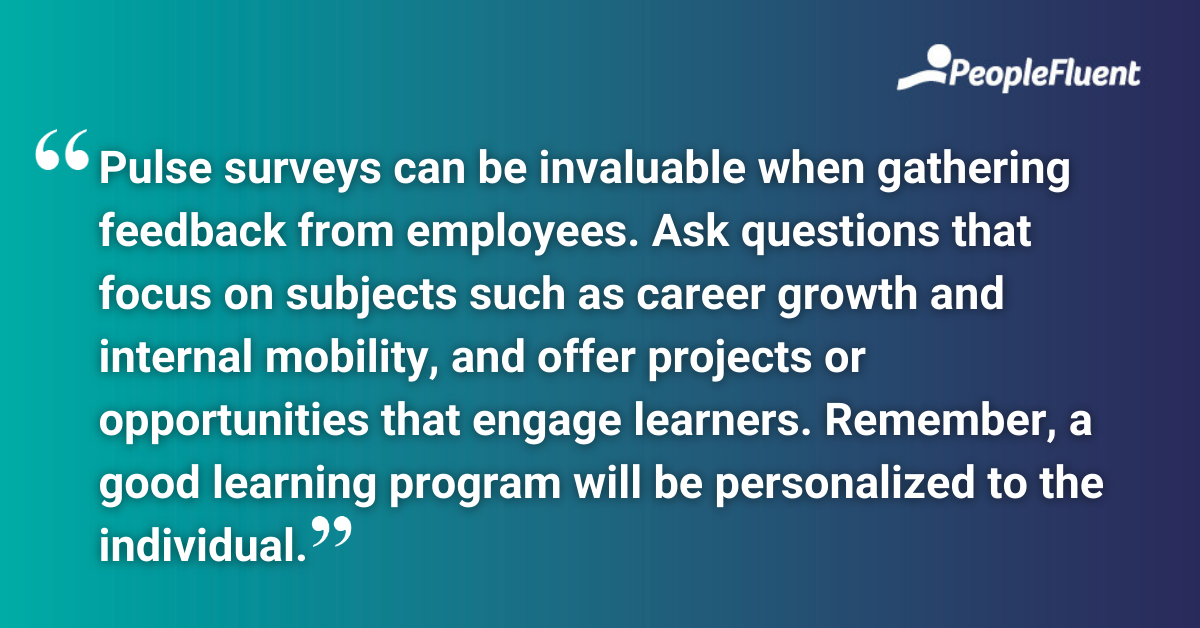Published: Oct 14, 2021Time to read: 5mins Category: Learning
Going for Growth: How to Prepare Your Learning Teams for a Skills-Based Workforce
The massive changes that upended our global workforces have also renewed the urgency of upskilling and reskilling projects. With the spotlight now shining brightly on skills, what’s the next step? To be successful, organizations need to change how learning and development programs are viewed. Let’s look at how you can prepare your L&D teams for a renewed focus on the skills-based workforce.
Are Your Learning Teams Prepared?
Traditionally, L&D departments are the first to see budget cuts and layoffs during an economic downturn. Even as on-demand learning materials became integral to the safety and wellness of frontline workers and their patients, L&D professionals felt the need to ‘earn their keep’, so to speak. It’s nothing new, though, for these resilient folks. Learning teams have the eternal role of justifying a business need—and during the pandemic, many of them have done so with a renewed passion for problem-solving.
If the rapid shift from in-person learning to remote and distance learning taught us anything, it’s that learners and learning pros are capable of adapting. With things a bit more stable now, L&D teams should take this knowledge to heart. They can use it as a framework for developing new ways to train employees, regardless of the learner's (or trainer’s) physical location.
YOU MIGHT ALSO LIKE | ‘Authoring Tools: Enhancing Your Learning Technology Ecosystem’
Skills Discussions in Action: L&D’s Influence on Company Culture and Engagement
Overall, learning and business leaders need to start discussing how they can collectively advocate for training and development to be at the heart of company culture. And, how this investment will support business strategy and potential outcomes.
- Specific (and immediate) opportunities that come to mind are:
- How L&D teams can streamline a safe, compliant reopening as COVID-19 restrictions subside
How learning teams can inform new-look onboarding processes—with more emphasis on pre-boarding—that align them with recruiting and hiring managers
This creates an opportunity for everyone in the business to start motivating employees before day one.
It also gives hiring managers a chance to see where the gaps are in their own processes. Furthermore, it lets L&D teams know when and how to design learning programs that may positively influence company culture.
Let’s say you hire a new employee to fill a customer service position based on their relevant skills, experience, and competencies. However, the employee expresses early on that they’re interested in growing with the company. Given this visibility into the employee’s desired career path in your organization, HR and L&D teams can work together to chart a path for this new employee.
There are two simple ways to make this happen:
- Learning in the flow of work
- Stretch projects that can be posted to a projects marketplace
With learning in the flow of work, the employee is able to perform the role they were hired for, without reducing productivity. And, they’ll have the relevant learning materials when they choose to start developing themselves—with L&D’s help, of course!
With the right oversight and HR tech, this holistic approach will naturally move employees through the business—creating a personalized talent journey (and company culture) that’s important for keeping people engaged. Supporting new career paths for your employees, no matter when they started with the business, is a great way to future-proof your workforce.

KEEP READING ON CONTINUOUS LEARNING AND TALENT MOBILITY | ‘5 Strategies to Improve Talent Mobility’
Solicit Feedback From Employees and Learners
If you’re struggling to support a learning program that offers structure and is measurable, encourage managers to get involved. Ask them questions like:
- What areas of the business are your employees interested in learning about?
- How can you make it easier for employees to participate in cross-functional projects that lead to new skills or competencies?
- How can L&D design just-in-time learning for employees who may be burnt out or, worse, already look for an external position?
Answers to these questions can lead to reskilling and upskilling efforts, naturally. But, they can also help managers and L&D teams avoid a tidal wave of turnover. By identifying which employees may be ready to leave the business—specifically due to a lack of career growth—managers can be more prepared to correct this.
When gathering feedback from learners, or employees in general, pulse surveys can be useful. Ask questions that focus on the sentiments above (career growth, internal mobility, etc.) and offer projects or opportunities that engage learners. Remember, a good learning program will be personalized to the individual. That means compiling the data available through your learning management systems as well as the manager and learner feedback you gathered.

MORE FROM THE BLOG | ‘3 Ways to Simplify Your Thinking Around Learning Ecosystems’
Further Nuggets of Skills-Based Hiring Wisdom Await...
You have just read an extract from our ebook, ‘Don’t Reinvent the Wheel, Shift It! How a Skills-Based Workforce Improves Recruitment, DE&I, and Innovation’. Download your copy today to dig into how skills-based recruiting is helping organizations widen candidate pools, narrow skills gaps, and build fairer, more open environments.